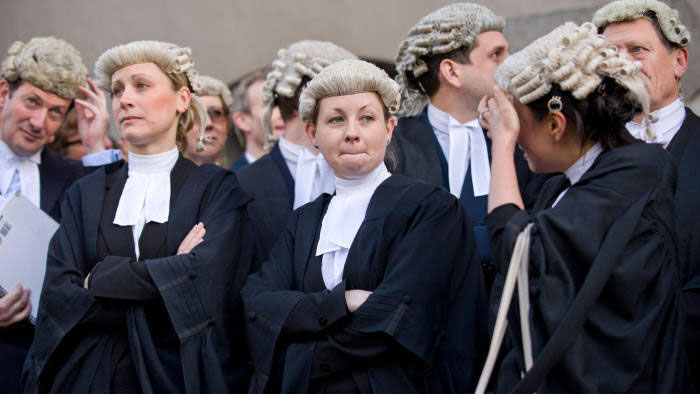If you are a passionate fan of foreign films about the legal system, you are likely familiar with the image of judges and lawyers wearing white wigs and black robes. So, why do foreign judges and lawyers wear wigs?
In the article below, we will help you delve deeper to find the answer to this question.
The wigs play a role in ensuring the “anonymity” of judges. These wigs are known as judicial wigs. They are seen as symbols of law and authority to a certain extent.
Interestingly, these wigs are not cleaned or washed. The belief is that the dirtier and darker the wig, the more it represents the independence and experience of the judge or lawyer. The wig symbolizes that the wearer is setting aside any biases related to race, religion, or skin color, placing themselves at a common standard representing the law, and will judge cases fairly and without prejudice.

Wigs help conceal the identity of judges and lawyers.
In addition to their symbolic nature, in an era when technology was not as advanced as it is today, wigs also help conceal the identities of judges and lawyers, making them harder to identify outside the courtroom.
For example, in Australia during the 1980s, a series of attacks on Family Court judges occurred. The Family Court was established by the Australian government in 1975 and did not mandate that judges wear robes or wigs to create a less formal courtroom atmosphere. However, after these attacks, Australia required Family Court judges to wear wigs and robes again.
Some argue that the white wigs and black robes worn by judges and lawyers symbolize two extremes of clarity and transparency between justice and crime. The white hair represents supreme justice. When wearing it, the individual’s duty is to clearly delineate right from wrong, truth from falsehood. This tradition dates back to the development of the English judiciary, where it was common for intellectuals to wear such hairstyles, which has been maintained to this day. Instead of growing and dyeing their hair, judges and lawyers wear wigs.
The origin of judges and lawyers wearing wigs
According to sources from Fashion-History, the image of judges and lawyers wearing wigs can be seen as a consequence of 17th-century fashion. King Charles II imported wigs from France to England in 1660, as these wigs were the trendy style for wealthy and powerful gentlemen at the time. This wig style affirmed that the wearer held a higher social status than commoners.
The King of England mandated that judges and lawyers wear these wigs. This was a way to assert their authority in the courtroom. By the 18th century, although wigs were no longer a popular fashion, the legal profession in England and Europe still regarded them as an important part of their culture and courtroom attire.
Wigs have largely fallen out of use in courts during the 20th and 21st centuries. Currently, only England and a few countries or territories that were former British colonies still use wigs for ceremonial purposes. Since the early 21st century, judges of the Supreme Court and the Queen’s Court in England and Commonwealth countries have maintained the tradition of wearing shoulder-length wigs during ceremonial events.
For everyday court proceedings, judges typically wear shorter wigs for comfort. Lawyers in these countries even use a shorter version of the traditional white lawyer’s wig from the 17th century. The lawyer’s wig is cut shorter to reveal part of the forehead and hair in front.


















































